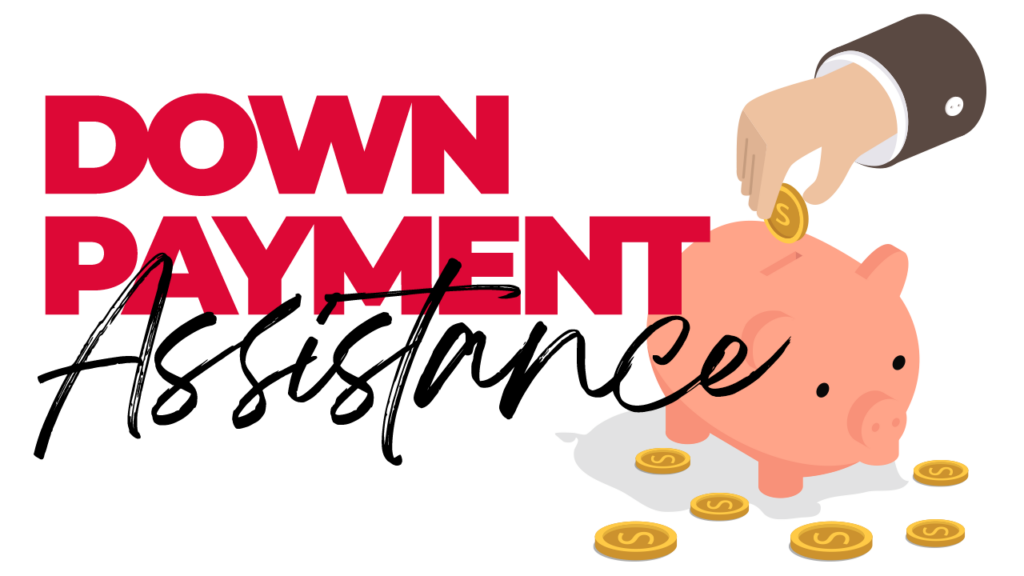For aspiring homeowners, coming up with the funds for a down payment and closing costs is often the biggest hurdle. These upfront expenses can feel overwhelming, delaying the dream of homeownership for years. However, down payment assistance programs exist to help individuals and families overcome these financial barriers. Since its founding DPA programs have helped millions of families achieve their homeownership dreams by providing financial aid for those initial expenses.

What is Down Payment Assistance?
Down payment assistance is a financial strategy designed to help homebuyers cover the initial costs of purchasing a home. This assistance helps alleviate the burden of upfront expenses like down payments and closing costs, making homeownership more accessible and achievable.
How Does Down Payment Assistance Work?
If you are thinking of buying a home, you may be wondering how you can reduce your cash-to-close. Several important down payment assistance strategies can help you pay less out of pocket on closing day:
- DPA Grant: This is a true grant that does not need to be repaid. It provides immediate financial relief for homebuyers who need assistance covering down payments and closing costs.
- Forgivable Second Mortgage: This is an interest-free loan that is completely forgiven after three years, provided the hom buyer stays in the home during that period. No monthly payments are required, making this option a great way to reduce financial strain.
Coming up with a strategic plan with your lender upfront goes a long way in structuring your financing the right way. These options can be used together or individually to reduce your out-of-pocket costs. That’s why it’s critical to conduct a cost-benefit analysis and weigh all your options with the help of your mortgage advisor at loan approval.
Typical Down Payment & Closing Costs for Buyers
Now, let’s look at the typical costs in the homebuying process:
- Down Payment: Typically ranges from 3% to 20% of the home’s purchase price, depending on the loan type.
- Rate Buydown & Origination Fees: Usually run anywhere from 1% to 2% of the total loan amount.
- Appraisal Fee: Determining the fair market value of your home costs between $350 to $500.
- Title Search and Insurance Fee: Safeguards against unforeseen ownership claims, with fees varying from $750 to $1,500.
- Inspection Fees: A cost to uncover potential property issues, ranging from $350-$450.
- Attorney Fees: Closing costs conducted by real estate attorneys can range between $695 to $1,200.
- Escrow Deposit: A prepaid amount for property taxes and homeowners’ insurance is due at funding into an escrow account. Typically, this includes 12 months of insurance and 2-10 months of property taxes, depending on the time of year you close.
This is exactly why down payment assistance programs exist. They serve as a financial lifeline and can be a game-changer in making homeownership possible.
Who Qualifies for Down Payment Assistance?
Eligibility requirements for down payment assistance programs vary but are often more flexible than traditional loan requirements. Some key qualifications include:
- First-time or repeat homebuyers: Unlike some programs that are limited to first-time buyers, NHF is open to both first-time and repeat buyers.
- Higher income limits: Many down payment assistance programs have strict income limits, but NHF offers more flexibility, allowing more homebuyers to qualify.
- Credit score requirements: A minimum credit score of 640 is required to be eligible for NHF assistance.
- Debt-to-income ratio (DTI) limits: The maximum DTI allowed is 45%, ensuring borrowers are in a stable financial position to take on a mortgage.
Advantages of Down Payment Assistance
DPA offers several distinct advantages:
- Nationwide availability: DPA assistance is available in all 50 states, making it one of the most accessible programs in the country.
- No repayment for grants: Unlike some assistance programs that require repayment, DPA grants are completely free money that do not need to be repaid.
- Forgivable loans with no monthly payments: The forgivable loan option does not require monthly payments and is fully forgiven after three years if the buyer remains in the home.
- Flexible eligibility requirements: DPA assistance is not restricted to first-time homebuyers and has higher income limits than many other programs.
How Down Payment Assistance Reduces Stress for Homebuyers
One of the biggest advantages of down payment assistance is the stress relief it provides for homebuyers. Buying a home is one of the most significant financial decisions a person can make, and the process can be overwhelming. Worrying about saving enough for a down payment and covering closing costs can add an extra layer of anxiety. DPA helps alleviate this burden by reducing upfront expenses, allowing buyers to move forward with confidence.
By providing grants and forgivable loans, DPA makes homeownership more accessible, helping buyers achieve their dreams sooner and with less financial strain. Instead of spending years trying to save for a down payment, buyers can take advantage of DPA assistance to secure their home sooner.
How to Apply for Down Payment Assistance
If you’re interested in down payment assistance, the first step is to check your eligibility by applying for pre-approval.
By reducing the financial barriers to homeownership, down payment assistance programs make it possible for more individuals and families to purchase homes sooner. If you’ve been struggling to save for a down payment or closing costs, DPA could be the key to unlocking your dream home.
So why wait? Check your eligibility today and take the first step toward owning your home with DPA assistance.
Are You Ready to Make a Move?
It's FREE and takes less than a minute to see what you could get.
